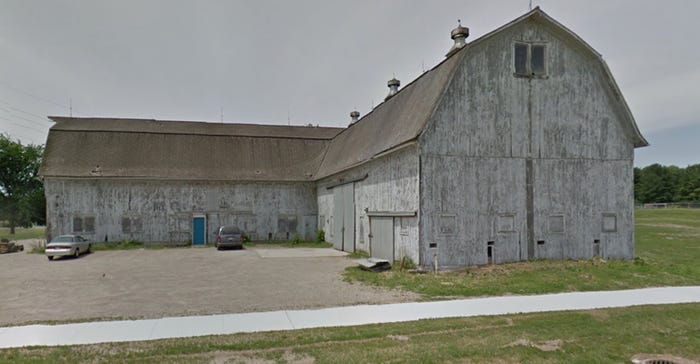March 16, 2018

When it comes to evaluating the possibility of something being restored or repurposed, one simple expression sums things up when that something has potential: “It has good bones.” Be it an old house, an antique piece of furniture, a vintage auto or a historic barn, if its basic framework is in good shape, all the rest can often be addressed.
Such was the case when Concordia University, a Christian educational campus in Ann Arbor, Mich., with a student enrollment of about 1,000, had to decide whether to save or dismantle an old barn on its property. Built in the 1930s, the L-shaped barn held a place of significance. It stood along Geddes Road, once a Native American travel route called Pottawatomie Trail.
Symbolically, it was at the heart of the Harry Boyd Earhart family’s dairy farm purchased in 1917. The barn was essential to the sheltering of livestock, storage of animal fodder and the milking of dairy cows to secure the “liquid white gold,” the family’s source of income.
Started as Concordia College, which is affiliated with The Lutheran Church — Missouri Synod, Concordia acquired the barn as part of its purchase in 1963 of the Earhart farm to establish the site of the faith-based institution.
But what to do with what to many looked like a tired-out, past-its-prime, fading structure? Decision-makers could have deemed that a barn, no longer needed for farming, had no purpose when it came to the structural needs for a mission of educating students.
The barn stood unused for several more years, as the focus was placed on more immediate campus needs.
Then in 2013, the barn was carefully evaluated, and the university decided that a structure would undergo a renovation. Ken Brock of Legendary Timberworks, agreed the barn had “good bones” and was worth saving.

DAIRY BARN: Before the university bought the land, the barn belonged to the Earhart family’s dairy farm. (Photo courtesy of Concordia University)

The gambrel barn has a main section about 36 by 98 feet, with a 36-by-72-foot wing. There are also two tile silos once needed for silage storage.
Repairs were made, and by 2014, the barn was dressed up in steel siding and roofing to match Concordia’s colors and sported an image of a cardinal, the school’s mascot. The barn was ready for its new life of service.
“It is the perfect storage facility for campus equipment and maintenance vehicles,” says Jerry Novak, director of buildings and grounds for the university. A variety of university vehicles and maintenance materials, and array of university supplies and furnishings are kept in the barn, as well as a workshop.
Curt Gielow, chief campus executive, commenting on the barn in an issue of Arbor Light, Concordia’s magazine, said, “The historic landmark barn on the corner of Geddes and Earhart roads has been renovated into a beautiful billboard identifying our campus to all who pass by.”
Brock offers a striking analogy between today and yesterday in the barn’s life. “Its use today represents the ultimate ‘man cave’ for the landscape and facilities technicians who support a sprawling four-season campus. The daily hustle of activity where a strong work ethic, akin to that on a farmstead, is instilled, keeps this barn working with dignity.”
A barn with good bones, stands tall, reminding students and passersby alike, that its life of service well begun, may have only just begun.
Arnett writes from Battle Creek.
About the Author(s)
You May Also Like




